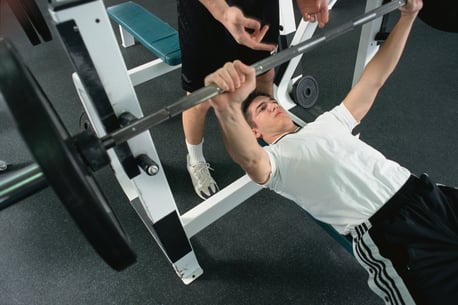 Let me ask you a question. Have you ever hit a plateau in the weight room when it comes to increasing strength? What about when it comes to increasing power output (vertical jump, short distance sprint)? Well if you have, you are not alone. I know I have hit plateaus in the past and it can definitely be frustrating when you are not able to get past it.
Let me ask you a question. Have you ever hit a plateau in the weight room when it comes to increasing strength? What about when it comes to increasing power output (vertical jump, short distance sprint)? Well if you have, you are not alone. I know I have hit plateaus in the past and it can definitely be frustrating when you are not able to get past it.
The question I always asked myself was, “What am I doing wrong now?” Well it wasn’t necessarily that I was doing anything wrong. I followed the basic recommendations for strength gain (that being 2–6 sets of 2–6 repetitions). I used to follow those parameters religiously because that’s what I had learned early in my undergrad classes. What I didn’t know is that there are virtually endless ways to get past that plateau. I share my favorite here.
Traditional Strength Training
Let me first describe what strength really means. Strength is essentially how much force a person can exert—or to simplify that, how much weight a person can lift. Traditional strength training is lifting a certain amount of weight, typically about 80–95% of your 1-rep max by 2–6 sets of 2–6 repetitions (NSCA, 2016).
Tempo Training
Tempo training is essentially lifting a certain amount of weight for a certain amount of time. What I mean by this is that I can manipulate the amount of tension I want during each rep by how long I have my athletes either lower the weight or bring the weight back up. This type of training has been found to elicit more strength and power output gains than traditional strength training (Dolezal, 2016).
I can have my athletes train at two different types of tempos that will essentially give me the outcome that I desire, whether that be more strength gains or more power gains. The first tempo would be more eccentric based (lowering the bar during a squat, lowering the bar during a bench press, etc.). I typically have my athletes lower the bar for about 3–5 seconds and then explode up. The parameters I use, and that have been found to have the best results, are about 65–85% of their 1-rep max for about 3–4 sets of 3–6 reps (Dolezal, 2016).
The second method of tempo training I use is velocity-based training. This essentially means I have my athletes perform a certain amount of reps as fast as possible. This type of training has been proven to increase both strength and power output in both athletes and the general population (Banyard, 2019). Performing 3–5 sets of 3–5 repetitions at about 50–70% is enough to elicit these changes.
The Verdict: Which Strength Training Method Is More Effective?
In my opinion, tempo training is a much better tool to use versus traditional strength training. The reasons are that with traditional strength training, you really have to make certain you stay within the parameters. With tempo training, there is more freedom in how you train, as well as the additional benefit of improving power output and strength, whereas traditional training does not really increase power output (Banyard, 2019). If you’d like a more technical explanation of why tempo training is better, let’s meet up at NIFS!
This blog was written by Pedro Mendez, CSCS, FMS, Health Fitness Instructor and Strength Coach at NIFS. To learn more about the NIFS bloggers, click here.

